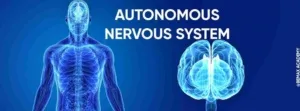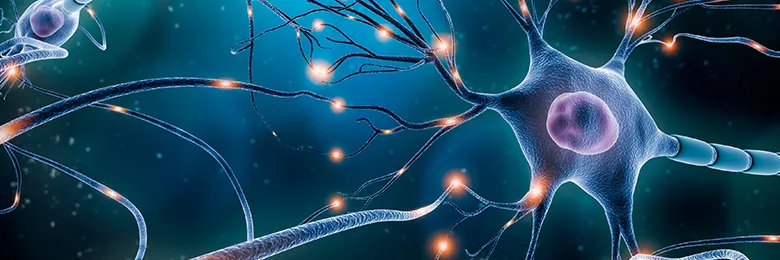Welcome to today’s blog, where we embark on a fascinating journey into the intricacies of the autonomic nervous system. This essential system plays a crucial role in governing the involuntary activities within our bodies, such as heartbeat, breathing, and secretions. Join me as we explore the two key divisions of the autonomic nervous system: the sympathetic system and the parasympathetic system.
The Sympathetic System: Emergency Response:
Let’s begin by delving into the sympathetic system, which is responsible for responding to emergency situations. Imagine you are strolling down a lane when suddenly, you encounter a stray dog. As a human being, your natural response would be to feel fear and prepare for flight. During this fight-or-flight response, several physiological changes occur simultaneously.
Firstly, your heart rate increases, as if preparing to pump more blood throughout your body. Additionally, your blood pressure rises, ensuring optimal blood flow during the heightened state. The surge of adrenaline, a neurotransmitter associated with emergency situations, triggers these responses. As a result, you may experience palpitations, increased sweating, and heightened awareness. These collective changes highlight the sympathetic system’s role in emergency handling.
The Parasympathetic System: The Relaxation Mode:
Now, let’s shift our focus to the parasympathetic system, which governs our body’s relaxation mode. In this state, various secretions become active, including mucus and saliva. Consider the aroma of a delectable biryani at noon; the increased production of saliva that accompanies this experience is a prime example of parasympathetic activation. All secretions in our body, such as mucus, acid, and saliva, are associated with the parasympathetic system.
Comparing Sympathetic and Parasympathetic Systems:
To better understand the distinctions between the sympathetic and parasympathetic systems, let’s compare their effects on different bodily functions. The sympathetic system, as mentioned earlier, increases heart rate, while the parasympathetic system does the opposite, slowing it down. Similarly, the sympathetic system elevates blood pressure, whereas the parasympathetic system reduces it. Secretions, such as mucus and sweat, are intensified by the parasympathetic system, whereas the sympathetic system is responsible for sweat production.
Furthermore, when it comes to smooth muscles found in organs like the bronchi, uterus, and stomach, the sympathetic system induces relaxation, causing bronchodilation, relaxation of the stomach, and uterus. Conversely, the parasympathetic system triggers constriction in these smooth muscles, resulting in bronchoconstriction, constriction of the stomach, and uterus. Additionally, the sympathetic system dilates the pupils (mydriasis), while the parasympathetic system constricts them (miosis).
Case Study: Identifying the Autonomic Nervous System’s Involvement:
Now, let’s examine a case study to apply our knowledge. An elderly female residing in a farmhouse is rushed to the emergency room after ingesting a liquid from an unlabeled bottle, indicating a suicidal attempt. She presents with symptoms such as diarrhea, frequent urination, convulsions, breathing difficulty, constricted pupils (miosis), and excessive salivation. Based on these symptoms, it is evident that they are related to the parasympathetic division, where acetylcholine is the neurotransmitter involved. The ingestion of an organophosphorus pesticide aligns with these symptoms, as organophosphorus compounds mimic or act upon acetylcholine. Therefore, the most likely scenario is that she consumed an organophosphorus pesticide, requiring treatment with an anticholinesterase agent.
Adverse Effects of Non-Selective Beta Agonist:
Lastly, let’s explore the adverse effects of a non-selective beta agonist prescribed to alleviate bronchoconstriction. Since a non-selective beta agonist belongs to the sympathetic system, we anticipate certain side effects. The options presented are bradycardia, tachycardia, hypotension, and worsening bronchoconstriction. As sympathetic stimulation increases heart rate, the expected adverse effect in this case would be tachycardia. This aligns with the sympathetic system’s influence on heart rate regulation.
Conclusion:
In conclusion, our journey into understanding the autonomic nervous system has revealed the remarkable interplay between the sympathetic and parasympathetic divisions. The sympathetic system prepares us for emergencies, while the parasympathetic system allows for relaxation and secretory functions. By applying this knowledge to clinical scenarios, we can better identify the involvement of the autonomic nervous system and make informed treatment decisions.
At B Max Academy, we are dedicated to providing exceptional coaching for pharmacy students preparing for exams such as DHA, MOH, and the licensing exams of various countries. Our comprehensive facilities, including hostel accommodations, ensure a supportive learning environment. If you aspire to pursue a rewarding career in the pharmaceutical field, we are here to assist you. Thank you for joining us today!
Watch this video for a better vision…


